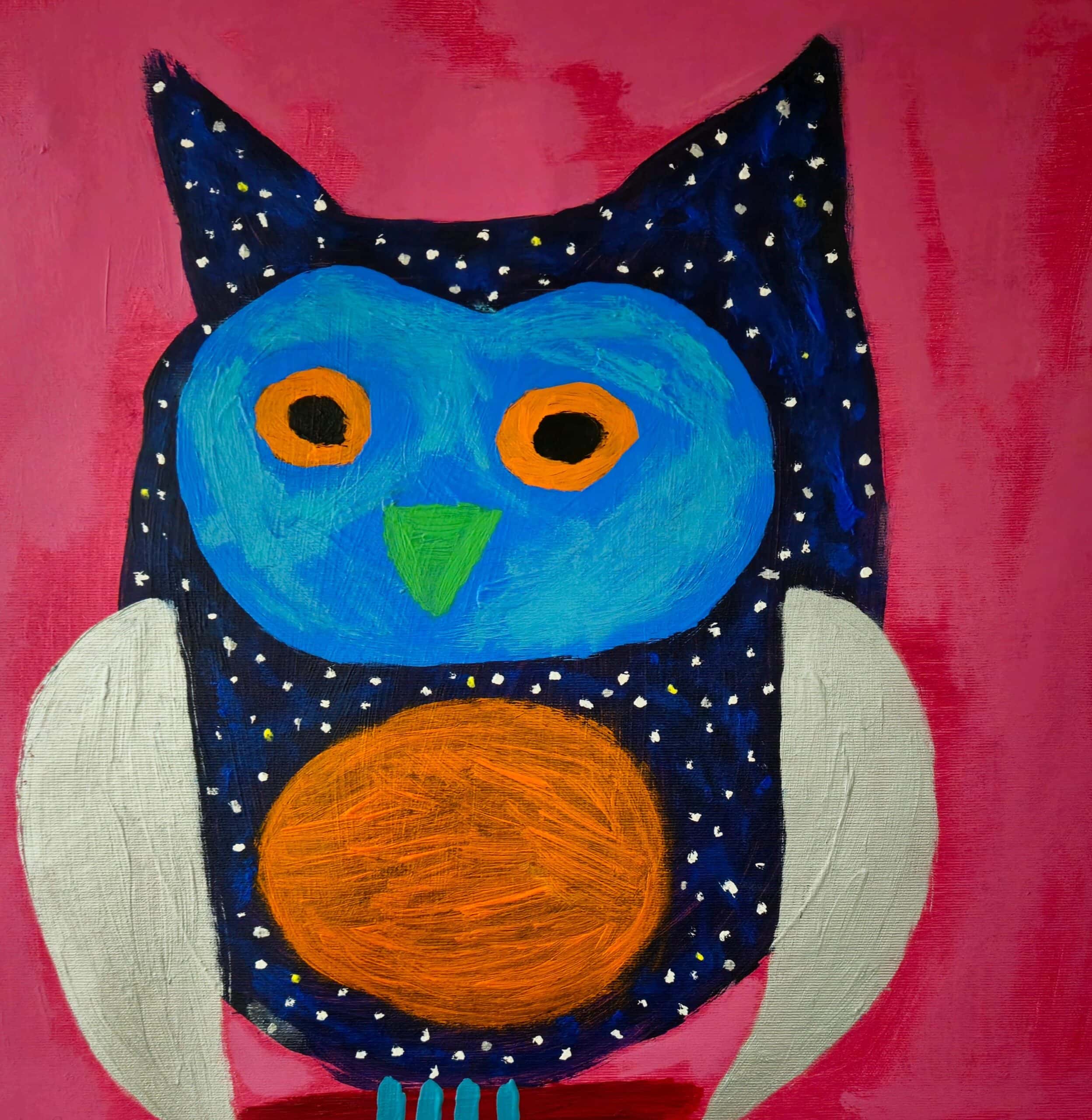You ever read something about your own work and think, “Wait, were they in my head or what?” That’s exactly how I felt reading this article from Caelis Galería about Picasso’s Owl No. 6. It’s like they had VIP access to my brain while I was painting—or maybe they were low-key hiding in my studio the whole time. Who knows?
They broke it down in a way that’s so on point, I’m kinda shook. Like, how do they get it better than I can even explain? If you’ve ever wondered what was going through my head while I was working on this piece, this article pretty much nails it.
Here’s the English translation (but if you want to train your Chinese skills you can read it here.
Between the Universe and the Individual, the Artist Leads Us on a Poetic Visual Drift
When we gaze at Picasso’s Owl No. 6 by Fulvio Gonella, it feels like we’re being pulled into a visual paradox—simple yet complex, naïve yet profound, clumsy yet wise. What appears to be a straightforward image unfolds into a broader philosophical dimension: it’s no longer just an owl’s portrait, but a metaphor for existence, the universe, and the essence of humanity.
Feathers are the tools that allow birds to soar, while stars are the most distant, constant light sources in the universe. The stars delicately scattered across the owl’s deep blue wings create a visual duality: they are both the texture of feathers and the stars of the night sky. On this symbolic level, the image offers a philosophical reflection—we are all, in the vast darkness of the universe, searching for our own points of light. And it is precisely these tiny “stars” that give meaning and strength to our existence. Meanwhile, the owl gazes gently at the viewer with its large, round orange eyes, as if to say: “The abyss isn’t always dark. Sometimes, there are stars hidden within it—and those stars are the feathers of your soul.”
Gonella’s use of color is both bold and pure. The pink background blazes like a burning sky, creating a surreal, dreamlike atmosphere. The blue face of the owl contrasts sharply with its orange chest, a clash of night and day, cold and warm, reason and emotion. And then there’s the green beak—an abrupt yet vivid symbol of life, as if reminding the viewer: Even in the vast silence of the universe, the whispers of life persist.
The color strategy in this piece seems to pay homage to Matisse, yet it carries the playful irreverence of Pop Art. Color is no longer just a tool to represent reality; it becomes a direct expression of emotion and thought. This simplification and exaggeration imbue the painting with a spiritual power that transcends the figurative, as if every patch of color is whispering, every brushstroke telling an unfinished story.
At the same time, the primitive, childlike brushstrokes introduce a kind of deconstruction. In Western culture, owls are often seen as symbols of wisdom, sacred to Athena. But Gonella’s owl defies this traditional expectation. It looks a bit goofy, even clumsy, like a fledgling that’s just learned to fly. Perhaps this is the artist’s clever twist: he dissolves the fixed symbol of “wisdom” and proposes a new question—maybe true wisdom isn’t about the accumulation of knowledge but about maintaining a childlike curiosity and a reverence for the unknown, much like the way we gaze at the starry sky with wonder.
When we face this owl, it’s not displaying wisdom—it’s inviting us to rethink what wisdom really means. In the artist’s world, wisdom is no longer cold reasoning. It’s the courage to stare at the stars, to admit our own smallness, and to maintain passion in the face of uncertainty.
Stars are witnesses of time; much of the starlight we see comes from billions of years ago. Feathers, on the other hand, are fleeting traces in the brief lives of birds, fragile yet unique. Through Gonella’s brush, starlight and feathers become metaphors for one another: eternity and ephemerality, grandeur and minuteness, distance and intimacy.
This is a visual poem, a philosophical meditation on existence and meaning. The artist reminds us that in a world filled with uncertainty and nothingness, art is our feathers, and those fleeting, shimmering moments are the stars deep within our souls. No matter how high or far we fly, perhaps what matters most is not the destination but the courage to spread our wings in the darkness and seek out the light.
